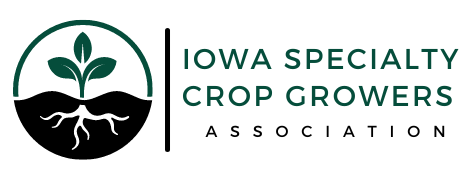As the days shorten and the chill of autumn enters the air, many look to local apple orchards for a classic crisp and sweet Iowa treat. Suzanne Slack, assistant professor and extension fruit crop specialist with Iowa State University Extension and Outreach, discusses the Iowa apple harvest, highlights unique cultivars to try and provides recommendations for storing apples and supporting local farmers.
While apple growers experienced an overall mild season with some early frost damage, Slack explained that some cultivars of apple are ready ahead of schedule this season due to ongoing drought conditions across the state.
“For producers without irrigation on their crops, it was a bit of a stressful year,” said Slack. “Even with irrigation, the drought has caused some apple cultivars to be ready for harvest up to three weeks early.”
While an early harvest is good for consumers eager to sample the local harvest, Slack said that it can be challenging for producers depending on their harvest infrastructure, as they have less time to hire seasonal workers to assist in the harvest and must work out solutions for selling, shipping and storing their crop ahead of the usual schedule.
According to Slack, another challenge for producers that comes along with heat and drought is insect damage. Hot weather causes the metabolic and reproduction rates of many pest species to increase exponentially, meaning that there are even more hungry insects damaging crops than in typical years. Drought conditions also weaken crops’ defenses against these insects, further compounding the issue.
Despite these harvest concerns, Iowa-grown apples are appearing at farmer’s markets across the state. While purchasing apples from farmer’s markets is a great way to support local farmers, Slack also recommends visiting orchards to pick your own apples or purchase directly from the growers.
“We have a lot of pick-your-own apple orchards in Iowa, so most people are probably less than an hour away from an operation,” added Slack. “It’s a great way to do even more to support local growers.”
In addition to having a variety of local producers to support, Iowa also has a variety of unique apple cultivars to try. The widely grown Red Delicious variety was first discovered in Iowa, and while modern versions of this variety from the supermarket sometimes prioritize looks and durability over taste, Slack recommends sampling the original red and gold striped Red Delicious apples if local orchards offer them.
Another cultivar Slack recommends is ‘Chieftain’, which was originally developed at Iowa State University and is available at many local orchards.
For those looking to preserve the taste of fall by storing apples, Slack recommends selecting ‘Gold Rush’, ‘Pink Lady’ or ‘Golden Delicious’.
“Most apples store well in the refrigerator, but it’s best to keep them in a crisper container and away from other fruits and vegetables. As apples ripen, they release a gas called ethylene, which can trigger other fruits and vegetables like bananas, avocados, broccoli and peppers to ripen faster,” added Slack.
When it comes to selecting apples for storage, it is also important not to pick overripe apples at the orchard. “If the apples are really sweet and starting to get soft, they are likely overripe and won’t store very well,” explained Slack.
For more information, a free publication on storing and harvesting apples is available from the Extension Store.
Author:
Suzanne Slack
Extension Fruit Crops Specialist
515-294-2751
slacksuz@iastate.edu



